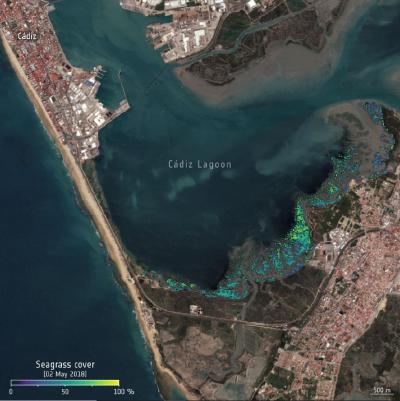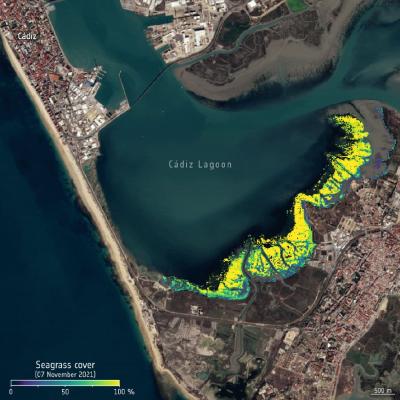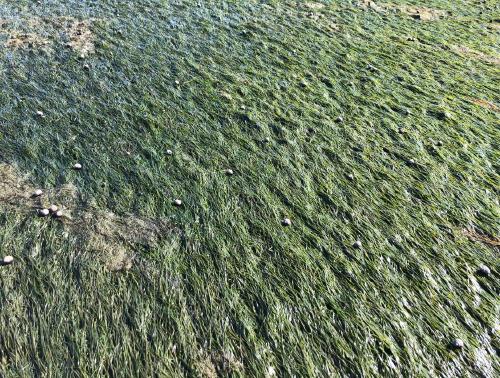- Recherche
- International
Sentinel-2 unveils the seasonal rhythm of intertidal seagrass
-
Du 08 novembre 2024 au 09 septembre 2025Campus Lombarderiefalse false
Thanks to an ESA-funded project and data from the Copernicus Sentinel-2 mission, researchers have revealed seasonal variations in intertidal seagrass across Western Europe and North Africa.
Thanks to an ESA-funded project and data from the Copernicus Sentinel-2 mission, researchers have revealed seasonal variations in intertidal seagrass across Western Europe and North Africa. As a key indicator of biodiversity, these new findings offer valuable insights for the conservation and restoration of these vital ecosystems.
The intertidal zone is the area where the ocean meets the land between high and low tides, and here seagrasses can form extensive meadows. These flowering marine plants provide critical habitats, acting as shelter, nurseries, and feeding and spawning grounds for a diverse range of birds, fish and invertebrates. Beyond their ecological importance, seagrass meadows also stabilise sediments and protect coastlines from erosion.
Monitoring the occurrence, extent, condition and diversity of intertidal seagrass as a key biodiversity variable is essential for assessing the overall health of local ecosystems.
Current global estimates of seagrass coverage do not differentiate between seagrasses in the intertidal zone and those in the subtidal zone, which remain submerged below the sea surface.
However, a recent paper, published in Communications Earth & Environment, details how a team of scientists used high-resolution imagery from the Copernicus Sentinel-2 mission to demonstrate its ability to map intertidal seagrass meadows and their seasonal changes across continents with consistency and precision.
Their research was funded by one of ESA’s Science for Society projects called Biodiversity of the Coastal Ocean, or BICOME.
Bede Ffinian Rowe Davies from Nantes University in France and lead author of the paper, said, “Coastal regions, like much of the world, are experiencing rapid and alarming biodiversity loss. To address this, it’s crucial to develop efficient monitoring methods so that timely and appropriate action can be taken to preserve delicate ecosystems.
"Using data from Sentinel-2 within the BiCOME project, we were able to reveal significant seasonal variations in intertidal seagrass. The peaks in extent shifted by as much as five months – challenging previous assumptions that there was little or no seasonal fluctuation."
For example, the two Sentinel-2 images displayed here show the changes in intertidal seagrass cover in the Cádiz Lagoon, Spain – one taken in May 2018 and the other in November 2021.


Victor Martinez-Vicente, BiCOME project principal investigator, noted, “This study demonstrates the potential of satellite observations to track changes in the extent of natural coastal ecosystems, providing valuable insights for indicators in the Global Biodiversity Framework. Further research is needed to develop long-term satellite-based monitoring systems and datasets to support global progress toward achieving the framework goals.”
Here is an example image of intertidal seagrass, specifically Zostera noltei from La Croisic.
ESA’s Marie-Helene Rio, added, “These new findings clearly demonstrate the value that Sentinel-2 can bring to monitoring intertidal seagrass. We now believe that these intertidal meadows behave differently to the type of seagrass that spends most of its life submerged by seawater. This suggests that previous estimates, which grouped the two types together, could be misleading.”
“The research paves the way to further monitoring and assessment of intertidal seagrass meadows using Sentinel-2 data.”




